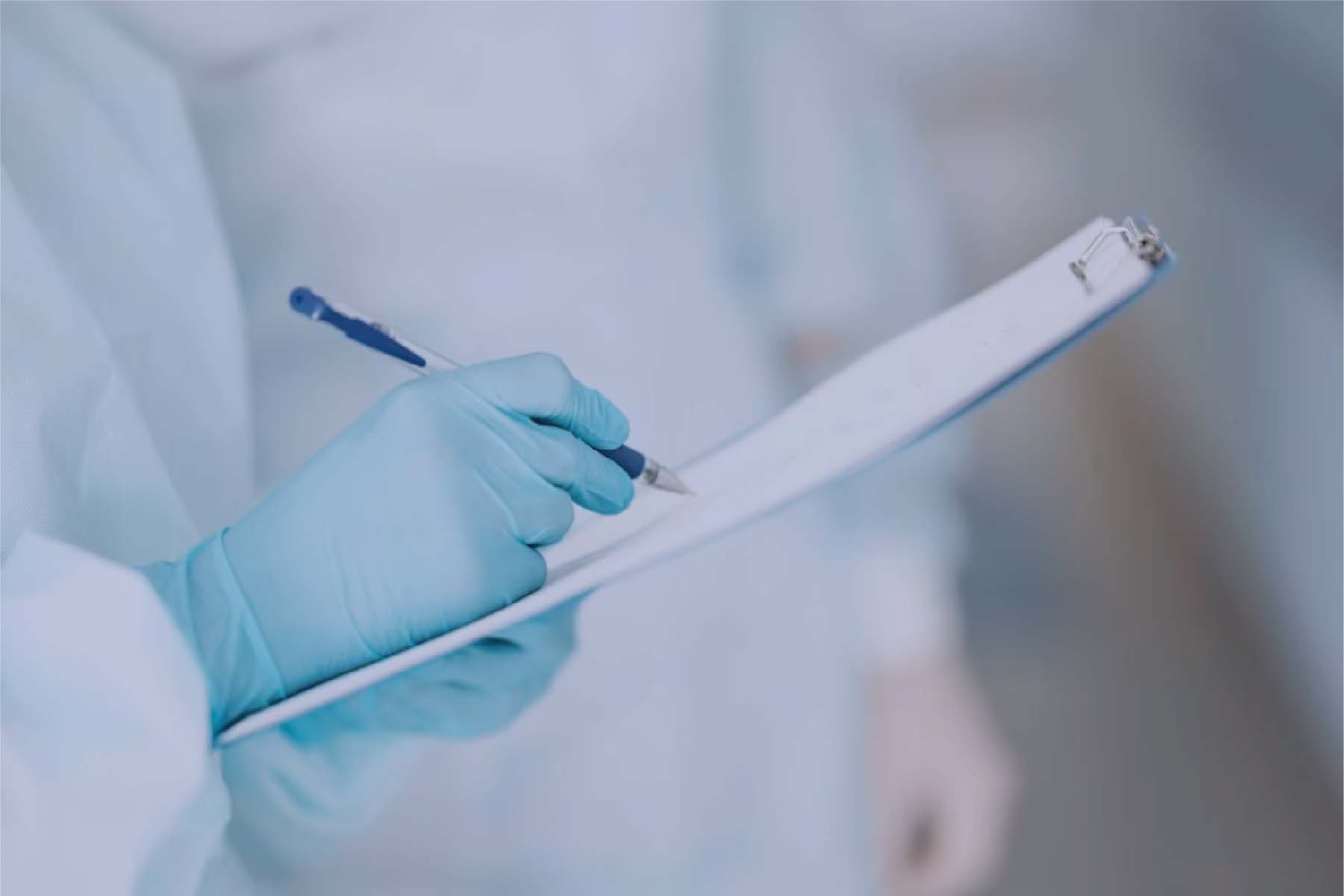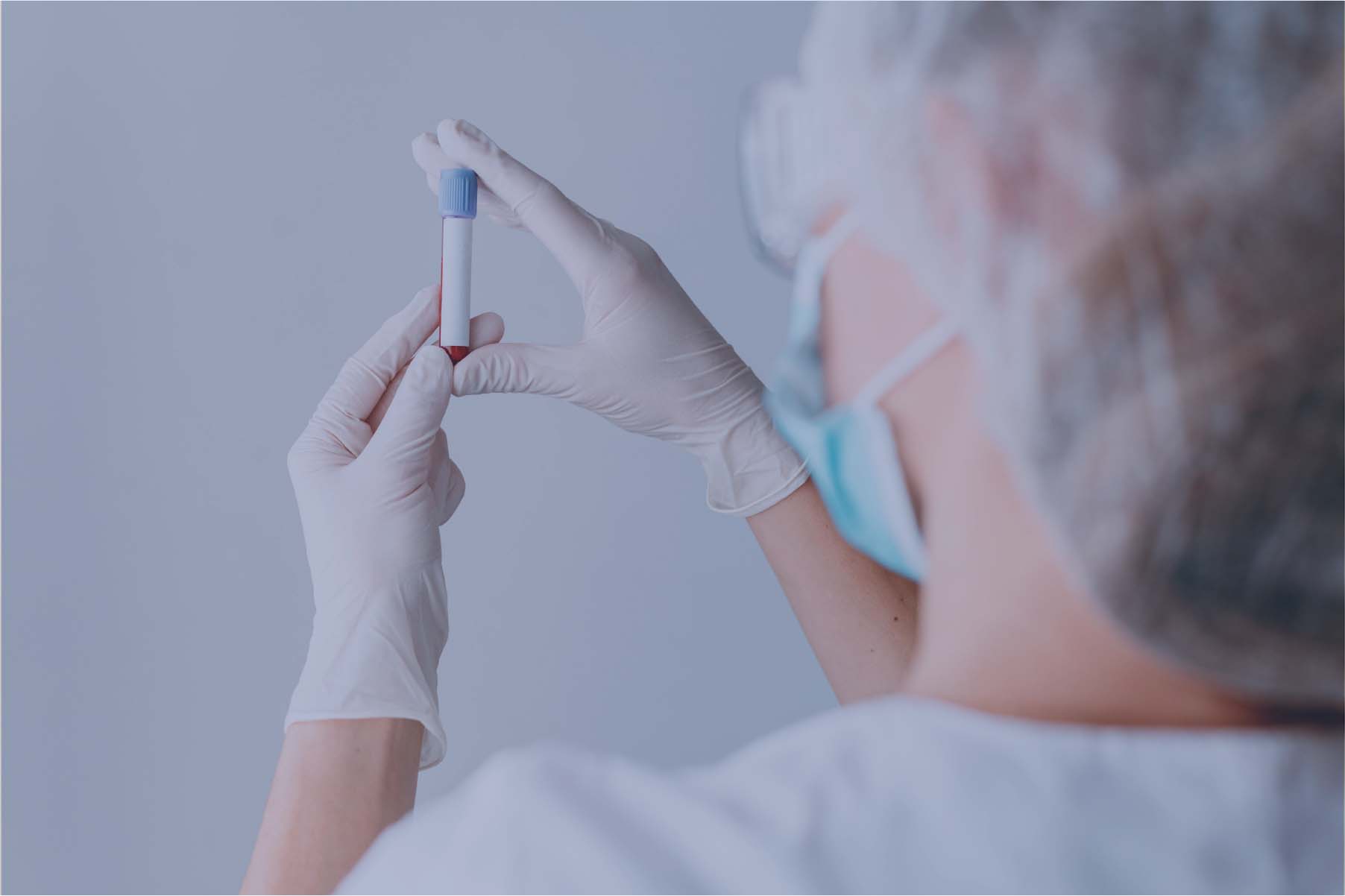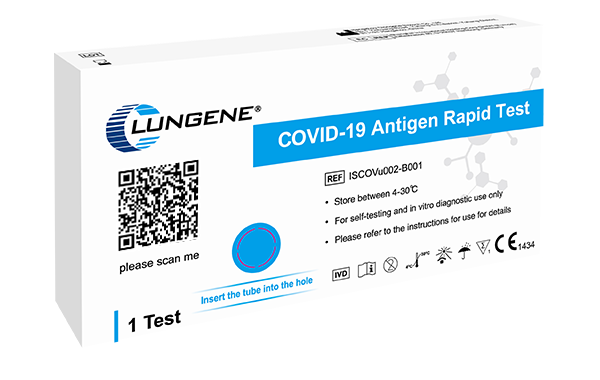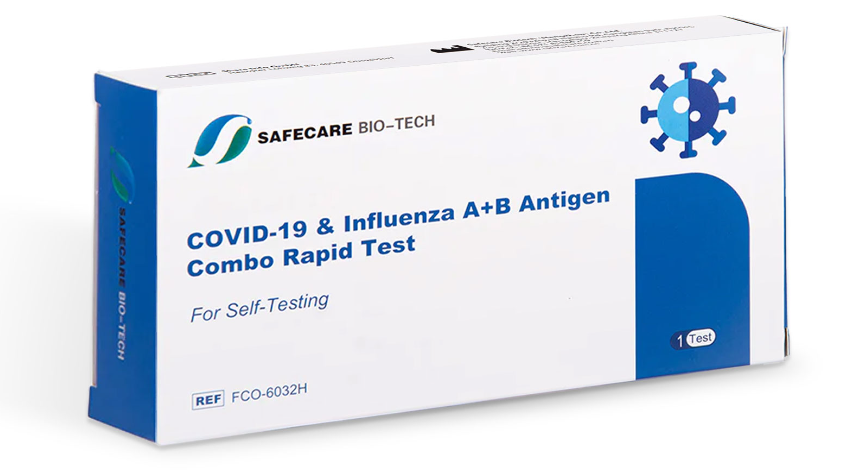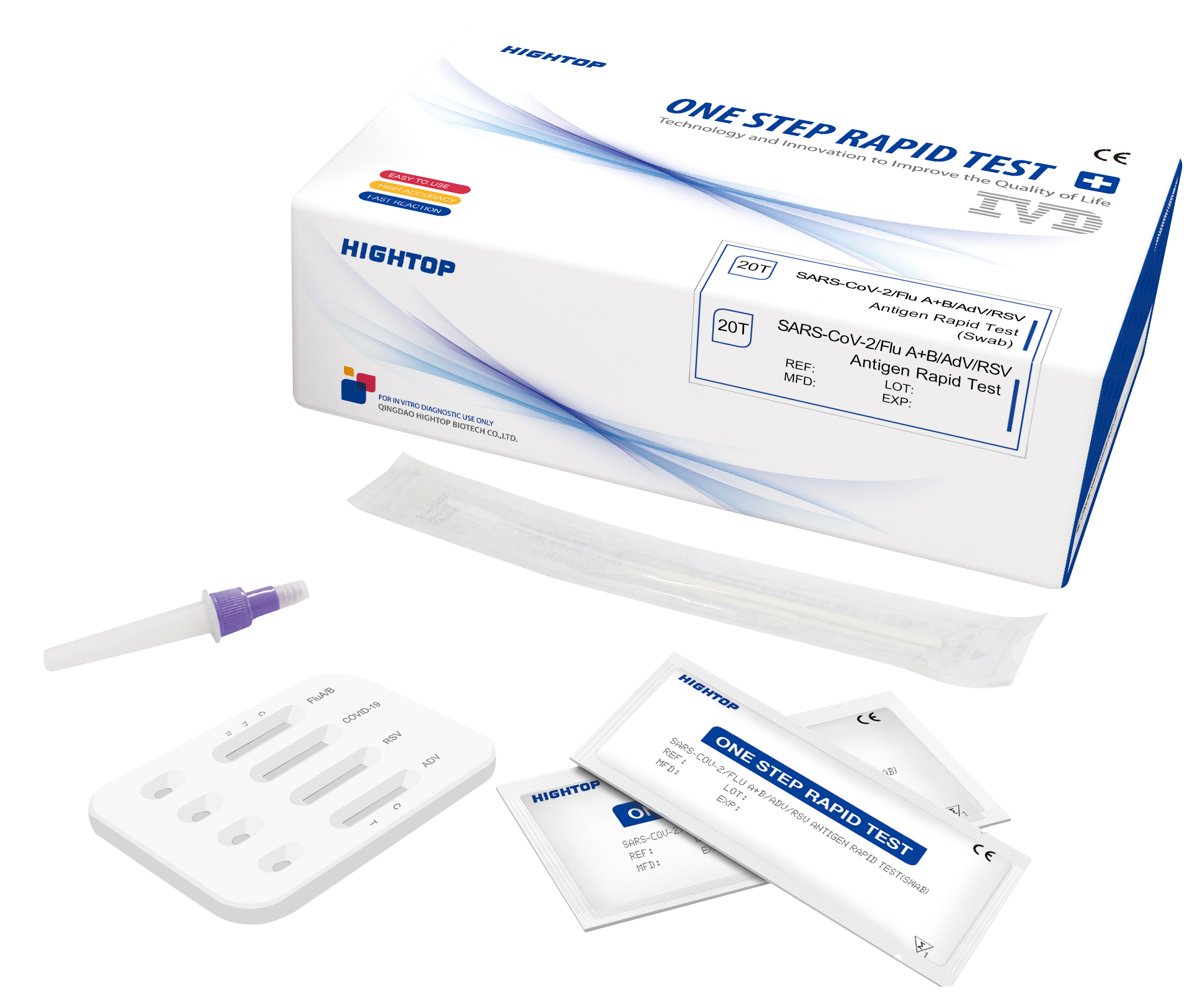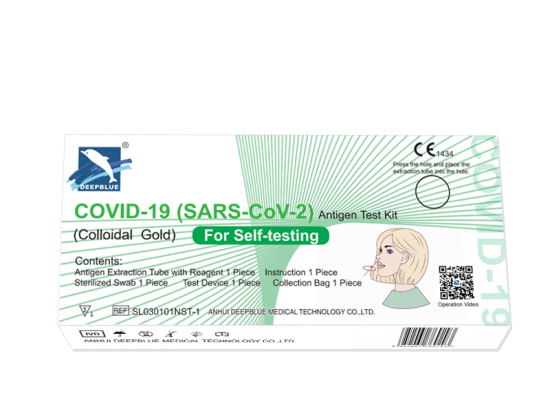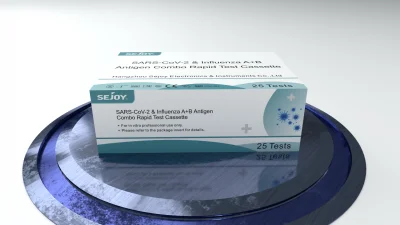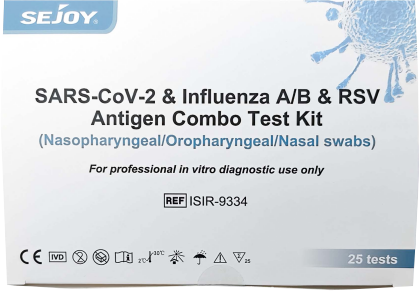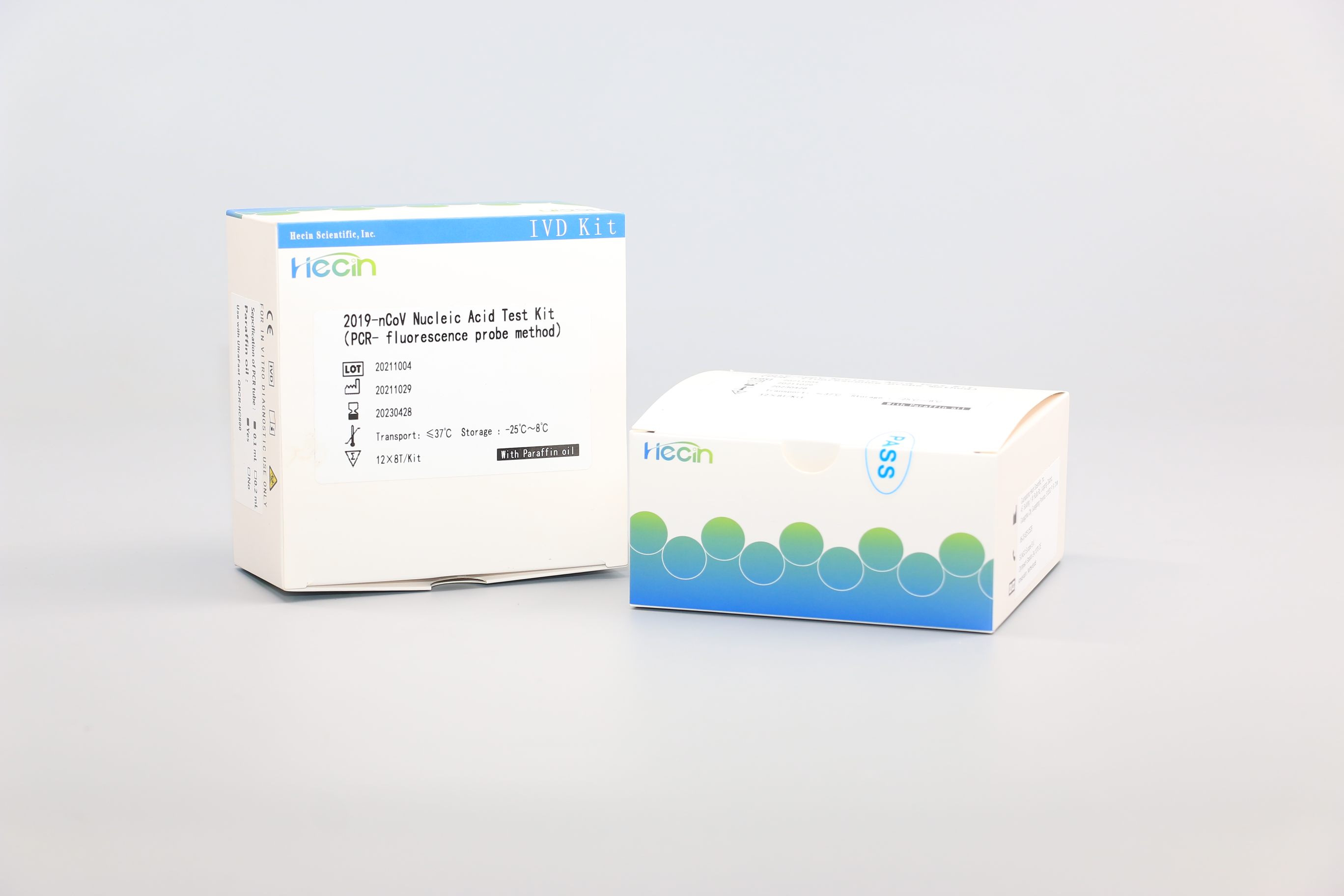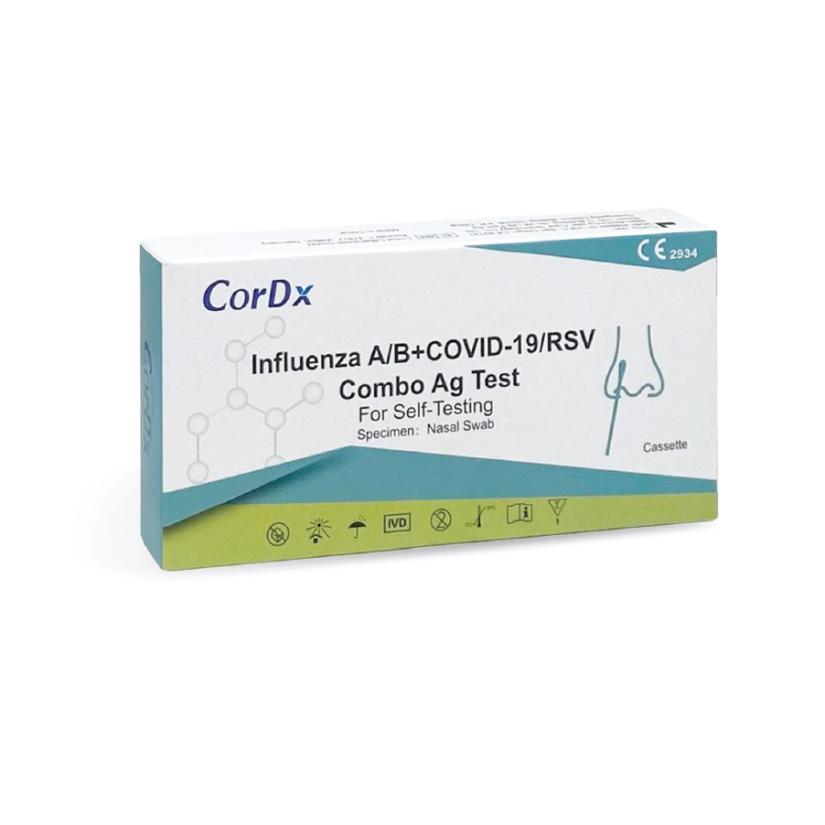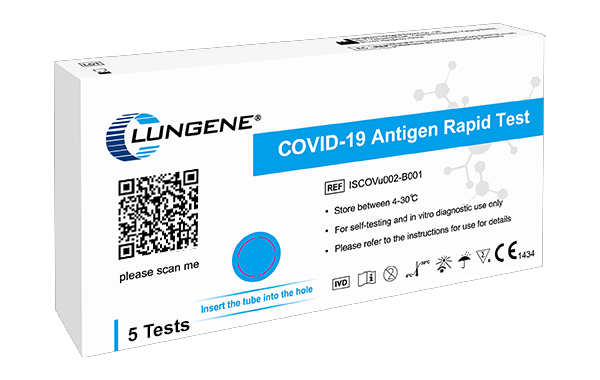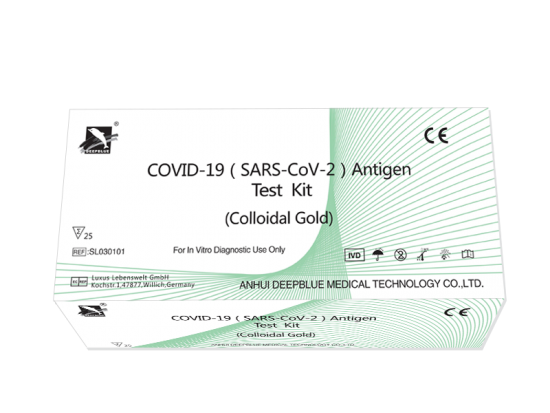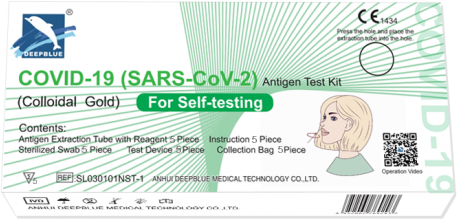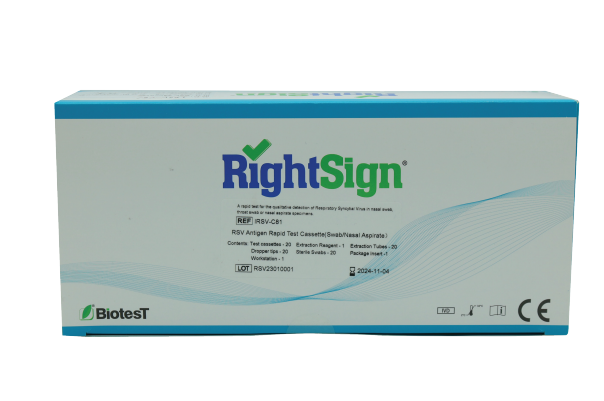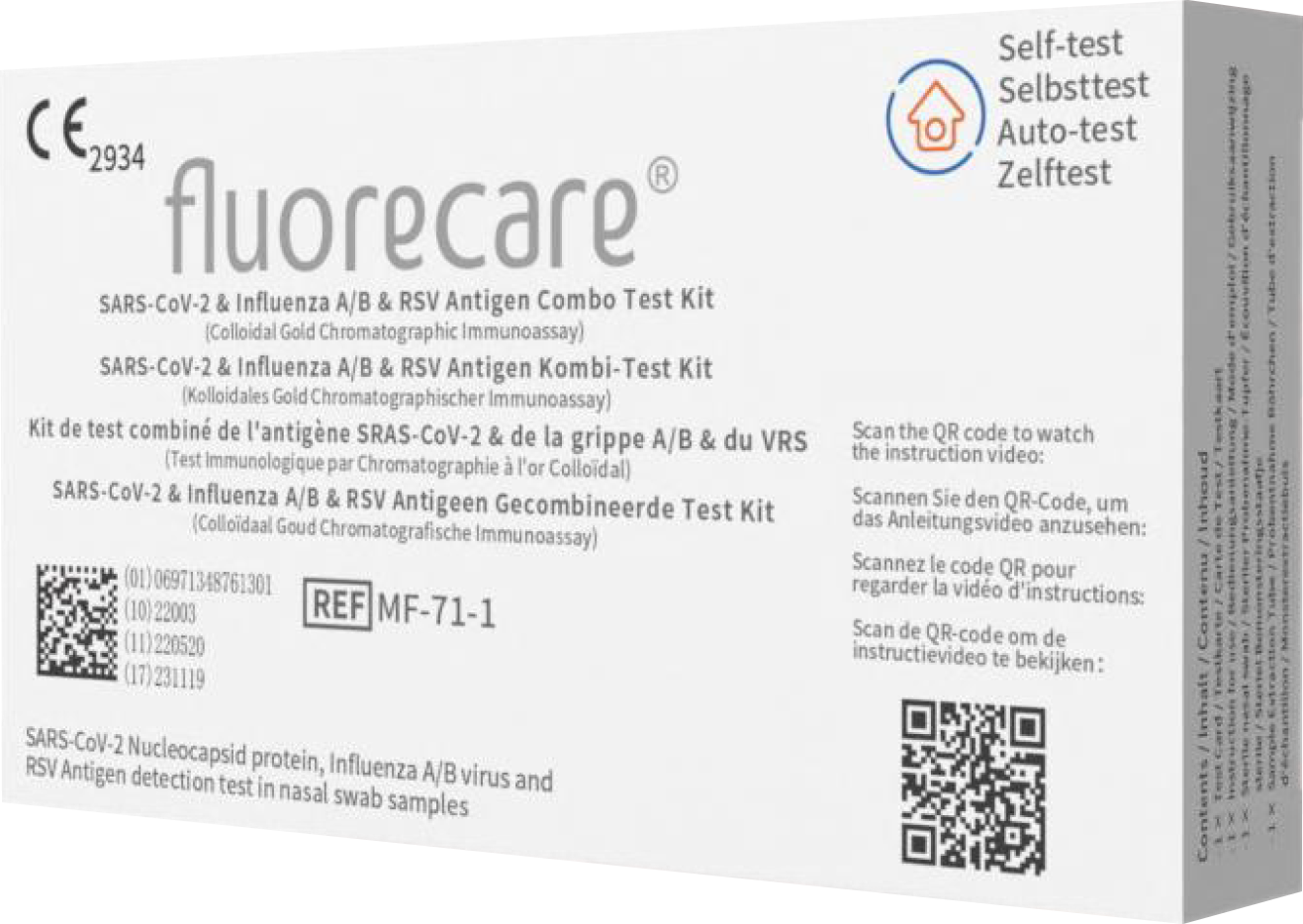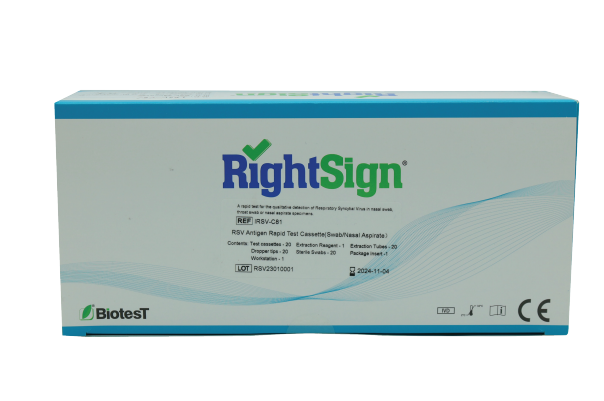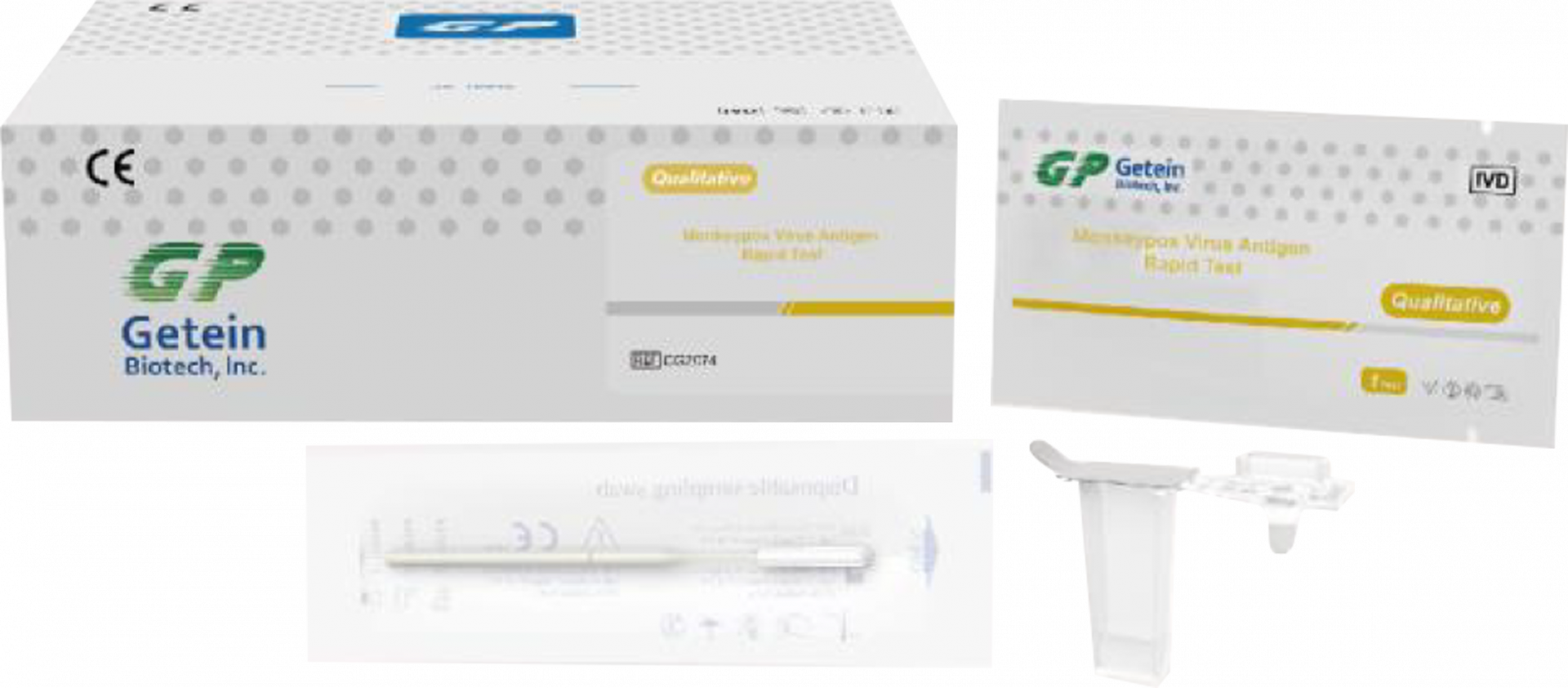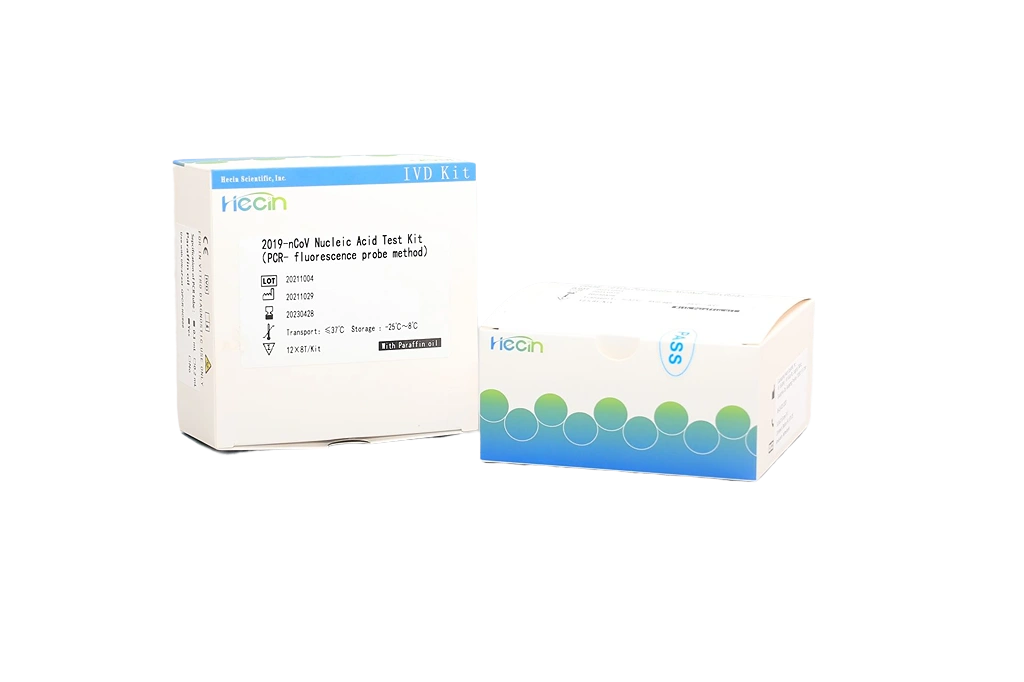Infectious Diseases Tests
At OdemShop, we offer a variety of infectious diseases tests. Protect yourself and others through early detection.
Testing for Infectious Diseases - A Comprehensive Guide
Our health is one of our most valuable assets. That's why it's so important to have tests for infectious diseases we can rely on.
This guide provides you with a comprehensive look at the different types of tests and their function in diagnosing these diseases. We'll explain which type of testing is best so you can get treated with the confidence you need - and help others!
If you're suffering from the symptoms of an infectious disease or want to learn about potential risks, there are several tests available. These tests look at blood and urine samples, as well as tissue samples, for signs of pathogens or antibodies in the body.
Ultimately, the results of the test will help your doctor make the right diagnosis and treat you appropriately. With this guide, we provide you with all the details surrounding testing procedures and their accuracy - so you can be sure you're making the right decision when helping!
What is an infectious disease?
Infectious diseases are illnesses caused by the invasion of pathogenic microorganisms such as bacteria, viruses, fungi, or parasites. Infectious diseases can be transmitted by a variety of routes, including droplet infection, contact with contaminated surfaces, or insect bites.
Treatment and preventive measures
Treatment of infectious diseases depends on the type of infection. Some infectious diseases can be treated with antibiotics or antiviral medications, while others require antiparasitic or antifungal medications. In some cases, hospital treatment may be necessary.
There are also several preventive measures that can be taken to prevent infectious diseases. These include good hygiene, such as regular hand washing and avoiding contact with infected people or surfaces. Vaccinations can also help reduce the spread of infectious diseases.
Symptoms
Symptoms of infectious diseases can vary depending on the type of infection and the organs affected. Some of the most common symptoms include fever, cough, sore throat, diarrhea, vomiting, skin rashes, and fatigue. Infectious diseases can also cause more severe symptoms, such as shortness of breath, chest pain, dizziness, or loss of consciousness.
Therefore, it is advisable to recognize all possible signs early so that immediate action can be taken before the situation is further aggravated.
Causes
Communicable infections and notifiable infectious diseases can be caused by viruses, bacteria, or parasites. Many of these pathogens spread easily from person to person through air or contact with blood or other secretions. Therefore, in order to receive the best possible treatment, it is important to determine the exact source of the infection. Therefore, all possible causes should be treated and evaluated so that patients can receive early help.
Diagnose
Once an infectious disease is diagnosed, testing can be done to determine whether it is viral or bacterial, for example. Notifiable diseases must be reported and treated to prevent the spread of pathogens. Therefore, it is important to check for all potential causes and take appropriate action so that patients can get help early.
What infectious diseases are there? And which are the most common?
There are several types of infectious diseases, including viral, bacterial, parasitic, and mycotic infections. The most common are cold and flu, which are usually caused by viruses or bacteria, but parasites and fungi can also contribute. Symptoms usually include fever, cough, sore throat, and headache.
Some of the most common infectious diseases are influenza, AIDS, and tuberculosis. These diseases can be caused by bacteria, viruses, or parasites and often have serious consequences for people who become infected. Some infections can also weaken the body and make it impossible for the person to do their daily work. This is why it is so important to see a doctor and have tests for infectious diseases to ensure early detection. Such a procedure will provide protection against more serious problems related to these diseases in the future.
Causes of infectious diseases: Pathogen Types
It is important to know the causes of infectious diseases. Communicable infections and diseases are widespread - some are contagious, others are not. Bacterial infections are common and can be spread through contact with infected people, as well as through direct contact or indirectly through air and water sources. A rapid test for infectious diseases can help determine them. In each case, it must be determined whether the infection is viral or bacterial. Only then should a decision be made on what action to take. With the correct diagnosis, the risk of infection can be minimized and effectively combated.
Bacteria: Definition
Bacteria are microscopic, single-celled organisms found throughout the world. They can come in a variety of shapes and sizes and are capable of rapid reproduction and adaptation. Bacteria play an important role in many areas, such as food production, drug manufacturing, and biological research. However, they can also have pathogenic properties and cause infections in humans and other animals. Proper hygiene and the use of antibiotics can help prevent the spread of pathogenic bacteria and treat infections.
Bacterial diseases
Now that we have become familiar with the definition of bacteria, let's look at some examples of bacterial diseases.
Individuals can become injured and contract contagious diseases through contact with other people or dirty surfaces. Transmission also occurs through medical facilities that have not been properly disinfected. It is important that affected persons be treated immediately to prevent the infection from spreading. In certain cases, it may be necessary to protect vaccinated individuals from the outbreak of disease. In addition, appropriate steps must be taken to facilitate access to medical care. Therefore, it is advisable to thoroughly study all information about these types of infectious diseases and ensure that you do everything necessary to protect people and communities from them.
Viruses: Definition
Viruses are a group of tiny organisms that can be very dangerous in many ways. One example is the coronavirus SARS-CoV-2, which was and still is responsible for a pandemic worldwide.
Many viruses are exchanged through human contact or through professional places, nursing homes, and other institutions. These places contribute to the spread of infectious diseases because people often live and work close together. This makes it especially important that these spaces be properly disinfected to prevent pathogens from being moved or transmitted.
Infectious diseases caused by viruses
Viruses are a common culprit when it comes to infectious diseases. They can cause various diseases and can be easily transmitted, especially if the immune system is weak.
Examples of diseases caused by viruses are influenza, measles, chickenpox, or rubella. But HIV is also originally derived from a virus. Fortunately, these diseases can be efficiently prevented with regular vaccinations. Therefore, it is very important to get the recommended vaccines regularly. Because of the high potential for infection, people with weakened immune systems should take special care to observe proper hygiene measures. In order to better understand the course of the infection chain, it is necessary to delve further into the details.
Sequence of the infection chain
Viruses are one of the most common reasons why infectious diseases break out. They can be transmitted through contact with infected people or objects and damage infected cells in the human body.
But the question is: how does the chain of infection work? The process usually begins when a virus reaches a person's body. Then it multiplies in the affected cells and produces new types of viruses that can lead to further infections. The next step is to pass these newly formed viral particles to other organisms - either directly or indirectly via droplets in the respiratory tract or surface exposure. Eventually, these particles enter the body of another person and cause the same symptoms and discomfort as the initially infected person. Because of their potential to be transmitted from one individual to another, viruses pose one of the greatest risks to public health. Therefore, it is important to learn more about the ways in which infectious diseases are transmitted in order to better prevent them.
Ways of transmitting an infection
The transmission of an infection is often unclear and can be difficult to understand. A picture that spreads before us is one of uncertainty and protection as people try to maintain their health:
- People in high-risk groups need to be especially careful.
- Different methods of protection against infected contacts or environmental conditions must be considered.
- There are sometimes surprising ways for pathogens to move from place to place.
Although there is never a guarantee that you will improve your condition or avoid certain illnesses, proper preparation can help. This includes reducing the number of potential source individuals and being aware of symptoms and treatment options in case of exposure.
Course of an infectious disease: stages
Infectious diseases run a very complex course and can be divided into different stages. First, there is the stage of incubation, in which the person has been infected but does not yet show symptoms. This is followed by the stage of disease manifestation. In this stage, the typical symptoms appear and the disease continues to develop. If timely action is taken, patients now have a good chance of successfully treating their disease.
After therapy has been completed, a rehabilitation program is often the next step. The aim here is to improve the patient's state of health in the long term and prevent complications. With such a program, patients can become fit for their everyday lives and should then have diagnostic tests done to detect possible relapses at an early stage.
Now is the time to think about diagnosis and treatment or therapy - after all, this is crucial for a successful healing process!
Diagnosis and treatment / therapy
Diagnosing an infectious disease is not always easy.
Various tests can help make the correct diagnosis and must be combined with other diagnostic procedures such as blood tests or imaging studies. There are many different types of tests for infectious agents, including molecular diagnostic tests, culture tests, and antibody tests. These tests can provide information about the patient's condition, but it is the responsibility of the treating physician to make sure he or she selects the right therapy.
What tests are available for infectious diseases?
Molecular tests
Molecular tests analyze DNA or RNA sequences to identify the genetic markers of an infectious disease. These tests are very accurate and can help predict disease early. They also help detect and treat infections in a timely manner because they can detect pathogens directly based on their genomic analysis. This makes it easier to determine the right treatment method for each specific disease - helping many people stay healthy and happy!
Antibody tests
In addition to molecular tests, there are also antibody tests that are used in the diagnosis of infectious diseases. These tests can provide indicators of whether someone has a particular disease or has recently been infected with it. They therefore help us to assess the patient's status more quickly and accurately, allowing us to take timely action and find effective treatments.
Rapid tests
In addition to antibody tests, there are also so-called rapid tests that are often used for infectious diseases. They can provide precise results in a short time and thus help us to support people in difficult situations more quickly. This enables us to take countermeasures at an early stage and find more efficient treatment methods.
Measures to prevent infectious diseases
To prevent infectious diseases, there are various preventive measures. The most common is to avoid contact with people who have symptoms of possible infection. Another important measure is to wash your hands regularly and to handle or use things that are publicly accessible only with clean hands.
Ways to take precautions:
- Avoid contacts: Keep your distance from people who have shown signs of illness and avoid places with large crowds. This can minimize your risk of infecting yourself or others.
- Hand washing: Wash your hands thoroughly under warm running water with soap for at least 20 seconds. Alternatively, you can use disinfectant. This will protect you from bacteria and viruses that are most easily transmitted through direct contact.
- Ensure better hygiene standards: By regularly disinfecting surfaces and keeping your everyday area clean, you significantly increase your protection against possible pathogens in the environment.
It is also advisable to get vaccinated wherever possible, as this can greatly reduce the risk of contracting diseases. It is also advisable to follow all the recommendations of the Robert Koch Institute (RKI) for keeping healthy!
In addition, it is extremely important to stay healthy by adjusting your diet well and doing sports, as well as stress reduction so that the immune system is strengthened. With these measures, you drastically increase your chances of being more resistant to potential infectious pathogens.
Conclusion
Our guide has given us a comprehensive insight into the tests and treatment options for infectious diseases. We now know how these diseases are transmitted, what effects they have on our bodies, and what risk factors are relevant to the risk of contracting the disease.
In addition, we now know specific tests that can be used to diagnose various infectious diseases. To relieve the unpleasant symptoms, modern medicine offers us various medications, the use of which can vary depending on the type of disease. Thus, it is possible to effectively treat the symptoms and thus counteract the course of the disease.
Through regular tests, we always keep ourselves informed about the state of the immune system and thus minimize the risk of serious consequences.
FAQ
What are infectious diseases?
Infectious diseases are diseases caused by the invasion of the body by pathogenic microorganisms such as bacteria, viruses, fungi, or parasites.
How do infectious diseases spread?
Infectious diseases can spread through droplet infection, contact with contaminated surfaces, or insect bites.
What symptoms can occur with infectious diseases?
Symptoms of infectious diseases can vary depending on the type of infection and the organs affected. Some of the most common symptoms include fever, cough, sore throat, diarrhea, vomiting, skin rashes, and fatigue.
How are infectious diseases diagnosed?
Infectious diseases are diagnosed through a variety of tests, including blood tests, urine or stool samples, swabs, or imaging tests.
What are PCR tests for infectious diseases?
PCR (polymerase chain reaction) tests are diagnostic tests that amplify the genetic code of viruses or bacteria in a sample to detect the presence of an infection.
How long does it take to get infectious disease test results?
Results from infectious disease tests can vary depending on the type of test and the laboratory that performs it. Some results may be available within 24 hours, while others may take several days or weeks.
How can infectious diseases be treated?
Infectious diseases are treated depending on the type of infection and the severity of symptoms. Antibiotics, antiviral medications, antiparasitic or antifungal medications may be used for treatment.
Can infectious diseases be prevented?
Yes, infectious diseases can be prevented through various preventive measures such as good hygiene, vaccinations, and avoiding contact with infected people or surfaces.
What are the possible complications of infectious diseases?
The possible complications of infectious diseases depend on the type of infection and the organs affected. Some complications can be life-threatening.
How important are tests for infectious diseases?
Infectious disease tests are important for making an accurate diagnosis and starting appropriate treatment. They can also help prevent the spread of infectious diseases.
What are the effects of an infectious disease on the body?
Infectious diseases can have a variety of effects on the body. These range from mild symptoms such as headache and fever to more serious conditions that require many years of treatment.
If a person is not treated properly or the course of the disease is unfavorable, it can even lead to death. It is therefore important to quickly assess the risk and take appropriate action.
Early testing for infectious diseases can help to identify potentially dangerous situations at an early stage and act accordingly.


